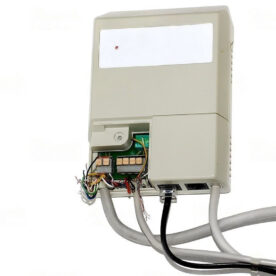
Conventional analogue phone systems have dominated business communication for a century. But it’s been clear for some time that they just don’t cut the mustard when it comes to modern demands.
Long-distance, international calls continue to cost a fortune. The fact that a traditional copper-based phone line can only handle one call at a time means you’re constantly investing in a new line every time you need to add a new staff member or phone point to the team.
If you’re thinking that there must be a more efficient way to do this, you’d be right.
Enter the new generation of internet-based calling technologies: VoIP.
By allowing you to make calls over the web, VoIP has the potential to reduce the costs of long-distance calls while making it far easier to scale up the number of calls you need to make at once.
The only problem is this:
For it to work, you do still need to connect your own VoIP PBX (which you use to generate the calls) to an Internet Telephony Service Provider (ITSP) that handles the process of translating your web-based calls into something compatible with any ‘normal’ phones and mobiles you’re calling.
And for businesses to use VoIP securely and effectively, when they link up to an ITSP, they typically need to set up an IP-PSTN Gateway to bypass their organisation’s firewall.
This is, to say the least, a bit of a hassle.
Designing the system, keeping it up-to-date, troubleshooting any issues that crop up… it’s time-consuming and often pricey to boot.
This can end up eating up the savings you’re making from scrapping the old-school phone lines and puts a lot of people off taking the leap.
Luckily, that has changed dramatically thanks to SIP Trunking.
Session Initiation Protocol (SIP) Trunking works a lot more like a digital version of a traditional phone line.
Just as your old landline phone uses a “trunk” to connect up the line to the phone company, SIP Trunking connects your end user up to the ITSP without getting held up at the pesky IP-PSTN Gateway.
But unlike a traditional phone line, you’re only paying for the ones you use.
That means you can have the capacity for hundreds of phone lines all lined up and ready to go. Still, because they exist in the digital rather than the analogue world, they only kick in when you actually kickstart them into action.
So, whereas having 100 analogue exchange lines installed means you pay the monthly fee for 100 lines– even if 90 of them lie there dormant all month – you can have 100 SIP Trunks at your disposal, but if you only use 10 this month, you only pay for 10.
It’s pretty obvious how this can save you a ton of cash on phone calls – particularly mobile, long-distance or international ones.
… But wait, there’s more.
By consolidating all your different phone and data networks into a single, IP-based one, you streamline the entire process and make it far easier and cheaper to manage.
Meanwhile, your IT team aren’t caught up with the ongoing, laborious task of ensuring nothing snarls up with your IP-PSTN Gateway, meaning they can turn their attention to bigger, better, more strategic projects that help to grow your business instead of just keeping it ticking over.
And, of course, SIP isn’t just about voice conversations. It’s capable of handling a broad range of communications tools and services rapidly becoming essential for doing business in the modern world: video calls and streaming, web conferencing, shared screens, desktops and whiteboards, instant messaging and the like.
Is SIP Trunking just a fad?
With so many recent advances in cloud communication technology, you might wonder if SIP Trunking is another passing fad that will soon be replaced by something bigger, better and faster. But, the fact is, most of the world’s biggest telecom hardware companies have added SIP support to their products and services – including Mitel, Avaya, Nortel, Panasonic, Samsung, Microsoft, Cisco, Siemens and BT. They know that ISDN’s days are numbered, and with ever-improving broadband speeds meaning more businesses switching to SIP, that’s where the future lies… for the time being, anyway!
Are you looking for a more streamlined way to manage your company’s communications while saving costs?
Visit our SIP Trunking page to learn more about our services. If you want to discuss your needs with our team, get in touch to arrange a free consultation.

